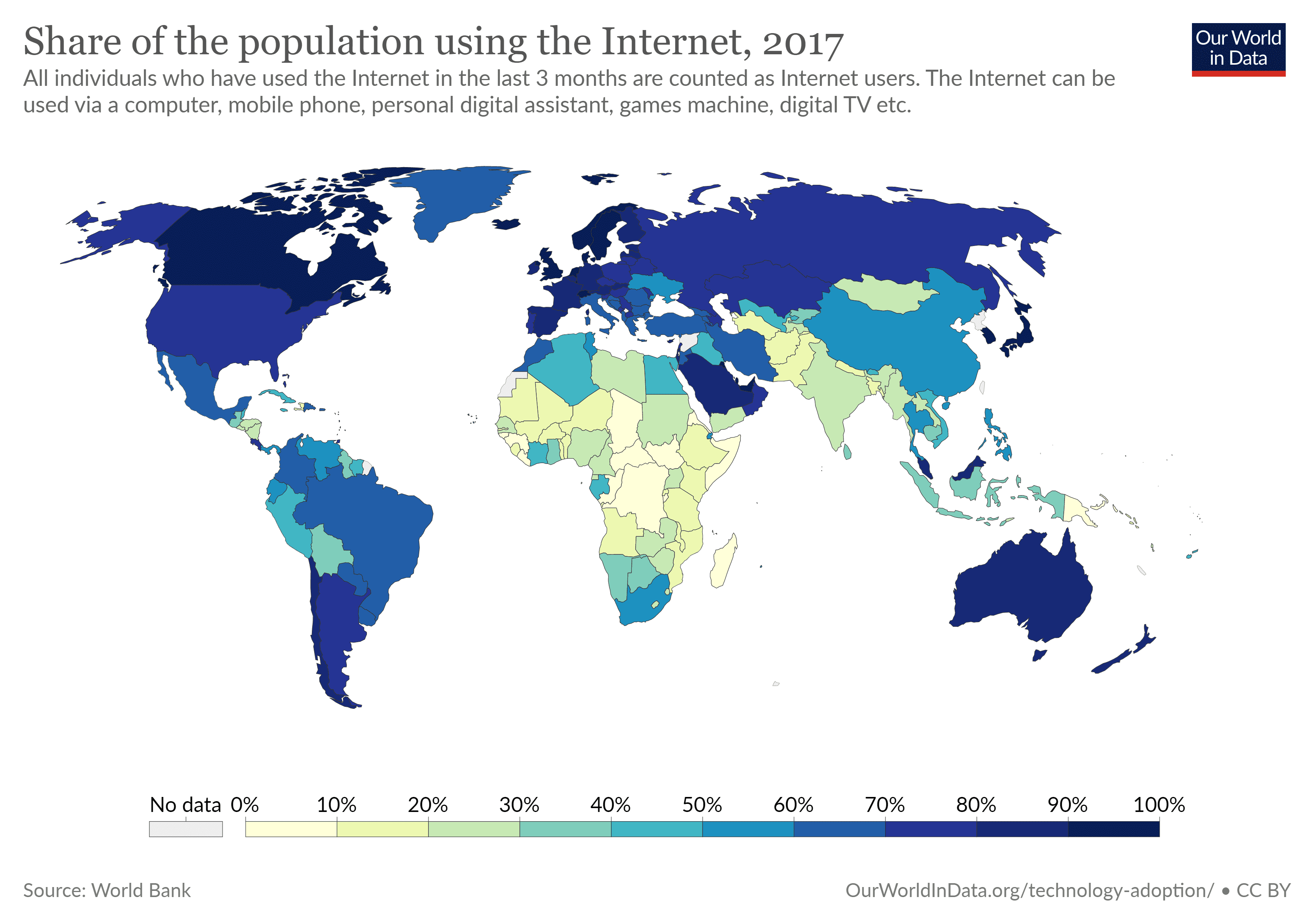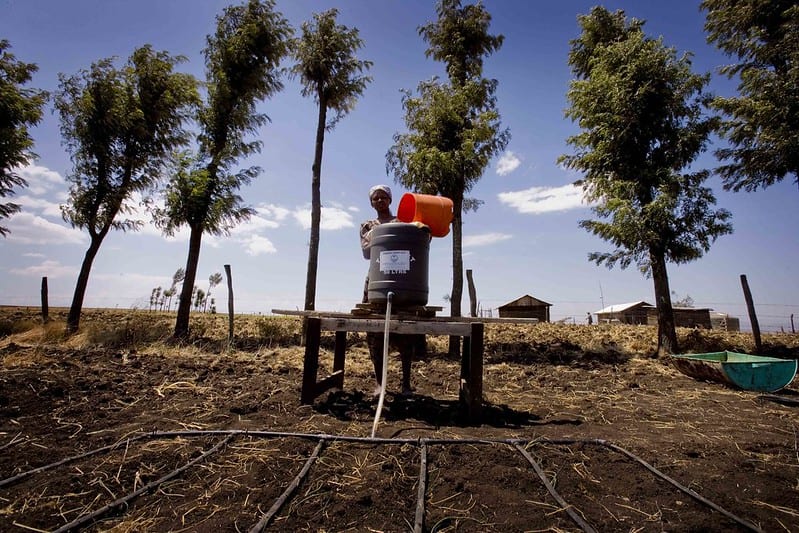The term “basic” calls to mind the bare minimum needed for survival. But when thinking about human needs, the basics should point to what is required for holistic well-being, not simply what is necessary to sustain existence. Although many basic human needs are universal, what well-being looks like can vary with geographic region. Diversity among cultures, environment and social structures ensure that basic human needs display differently from place to place.
 Cultural Impact on Human Needs
Cultural Impact on Human Needs
In 2016, the United Nations declared internet access a human right, acknowledging its role in connecting individuals to basic needs like jobs, healthcare and education. However, internet access doesn’t exist in every region of the world. And while in some areas, limited internet access is an obstacle to well-being, in other regions, there isn’t a need for that type of technology at all.
In Detroit, communities with limited internet access have found creative ways to increase connectivity. Local organizations are developing their own high-speed internet that is affordable, sustainable, and accessible to residents in underserved areas. These efforts strengthen resilience in marginalized communities and provide innovative ways to obtain basic needs. Localized solutions create unique pathways to well-being and increase connectedness within communities and with the world as a whole.
On the other hand, some cultures rely on continued isolation from the global community in order to sustain well-being. The Amazon basin has the highest concentration of isolated Indigenous tribes in the world. Many of these are nomadic, hunter-gatherer societies that intentionally avoid interaction with outsiders. Incidents involving loggers venturing into remote parts of the Amazon, or governments building highways through Indigenous territory, can create run-ins with outsiders. Intrusions from the outside world have historically resulted in widespread disease and destruction of ways of life. Recently, the immense danger posed by COVID-19 has highlighted the importance of actively working to protect isolated Indigenous tribes.
Ultimately, there is significant overlap in basic human needs across the globe. And while for most people, connection is a basic need, there is great variation among cultures in how this need is met.

A woman uses a drip irrigation watering kit on her farm near Gilgil, Kenya.
The Diverse Challenges Posed by Climate Change
In order to achieve well-being, humans must find ways to live in harmony with their environment. With climate change worsening, environmental hazards are becoming more intense. As their environment changes, so do the ways in which societies look to obtain their basic needs. These efforts are especially important as the need for climate resilience increases.
Mumbai, India, is one city that finds itself particularly vulnerable to environmental threats such as flooding and sea level rise. The city’s Coastal Road project aims to construct a highway on stilts, meeting Mumbai’s transportation needs by turning water into city land. Though the undertaking may improve quality of life for some residents, construction will increase flood risks and won’t sufficiently prepare the city for the projected extent of sea level rise. So alternatively, some organizations are seeking to embrace knowledge of local ecologies and reimagine urban infrastructure. Drawing on knowledge from Indigenous fishing communities, there are promising opportunities for learning how to structure the city around an increasingly wet environment.
Elsewhere, in regions where water is scarce, communities are finding inventive ways to subsist in dry environments. Extreme drought brought on by climate change has rendered some established methods of growing staple crops ineffective. However, advancements in agriculture science are helping societies to adapt. Farmers in Kiambu County, Kenya, are using drip irrigation to increase food production. And in Zimbabwe, the use of drought-tolerant maize shows significant potential for improving food security. As extreme weather conditions intensify, these agricultural innovations will become increasingly important, and the need for new technology and ideas will grow.
The climate migration crisis further illustrates how alterations in the natural environment impact human needs. Specifically, climate change can diminish the basic needs people have relied on for centuries, displacing communities and changing the way they sustain well-being. In Central America, drought and flood patterns brought on by El Niño are pushing some rural farmers to leave their homes. Hoping to curtail the size of the change, migrants may first try moving to larger towns, then to cities, before crossing international borders. But uprooting lives and finding new ways to earn a living are always huge tasks. Forced to leave a familiar environment that can no longer sustain their way of life, climate migrants reckon with a future full of unknown challenges. Amidst completely new surroundings, determining how to meet basic needs and finding ways to thrive requires great resilience.
In the face of climate change, people’s basic needs ultimately transform depending on their location and depending on the particular climate-related risks of that region. While one region may require new transportation infrastructure for flood-prone areas, another region might develop a new need for drought-resistance crops. And in some circumstances, individuals and communities may move from their ancestral homes to escape the challenges of a changing climate.

In collectivist countries like Indonesia, the need for group belonging has significant value.
Social Structures and Basic Needs
Different social structures can influence what needs are prioritized and how those needs are fulfilled. In individualistic societies like the United States, Maslow’s Hierarchy of Needs is commonly used to evaluate human behavior. The bottom of Maslow’s Hierarchy describes the most basic human needs as physiological needs for food, water, warmth, and rest, followed by needs for safety and security. However, in collectivist societies, like Indonesia or Japan, research suggests that belonging to society becomes the most basic need. And in considering basic needs as a path to well-being, collectivism tends to prioritize the well-being of the group rather than focusing on the well-being of the individual.
Similarly, different types of economies can also impact how human needs are defined and obtained. In capitalist societies, there is significant value on self-interest and on the hopes of obtaining a high quality of living. This shapes how basic needs are fulfilled within different regions of a society, influencing where needs are met in excess or whether needs are met at all. The connections between capitalism, inequality, and public health challenges means that well-being in such societies is highly localized. The ability to obtain basic needs can vary from region to region, community to community, and person to person.
Across different social structures, climates, and cultures, everyone needs some form of food, water, or shelter to survive. But when you consider that basic needs point to what is necessary to achieve a more complete state of well-being, it becomes clear that those needs can show up very differently across different regions of the globe.
Image credits: Internet (Share of the Population Using the Internet, 2017 by OurWorldInData.org is licensed under CC BY 4.0); Drip irrigation (AUSAID KENYA by Department of Foreign Affairs and Trade is licensed under CC BY 2.0); Crowd waiting (Mother and boy waiting in line in Tirta Empul temple – Bali, Indonesia by Tiket2.com is licensed under CC BY 2.0)



